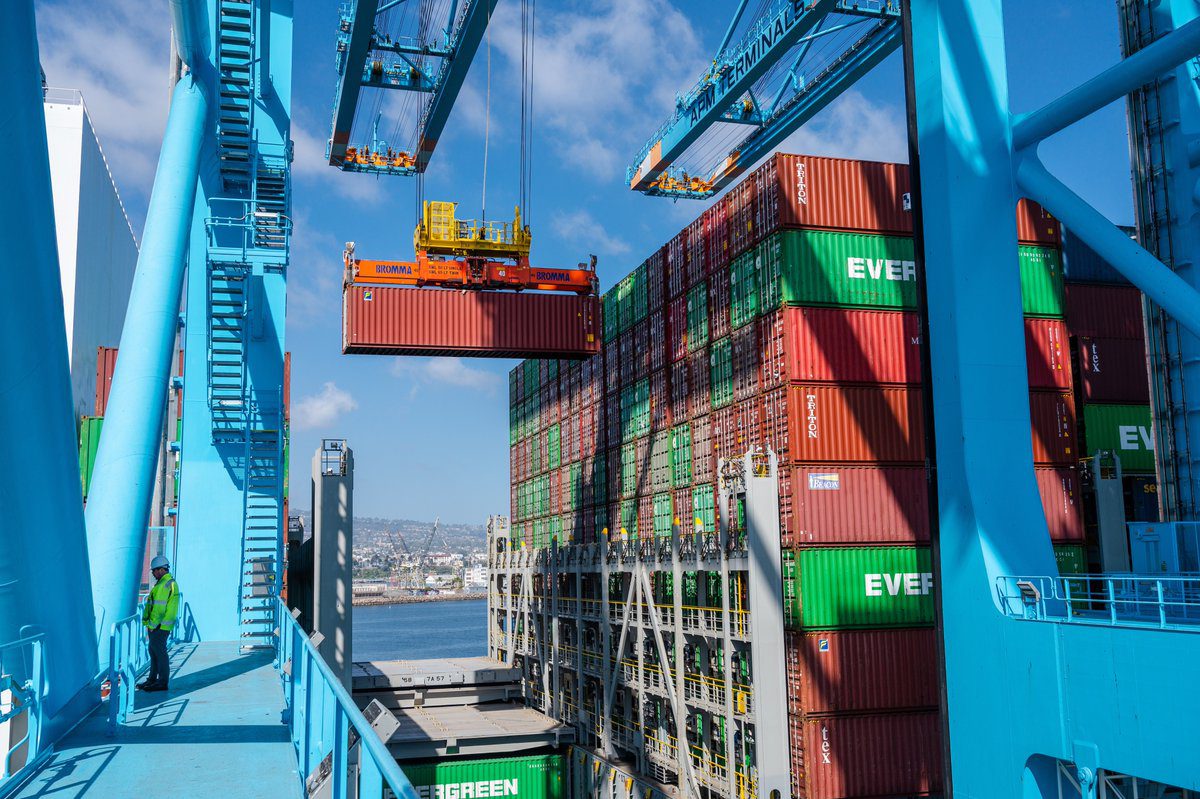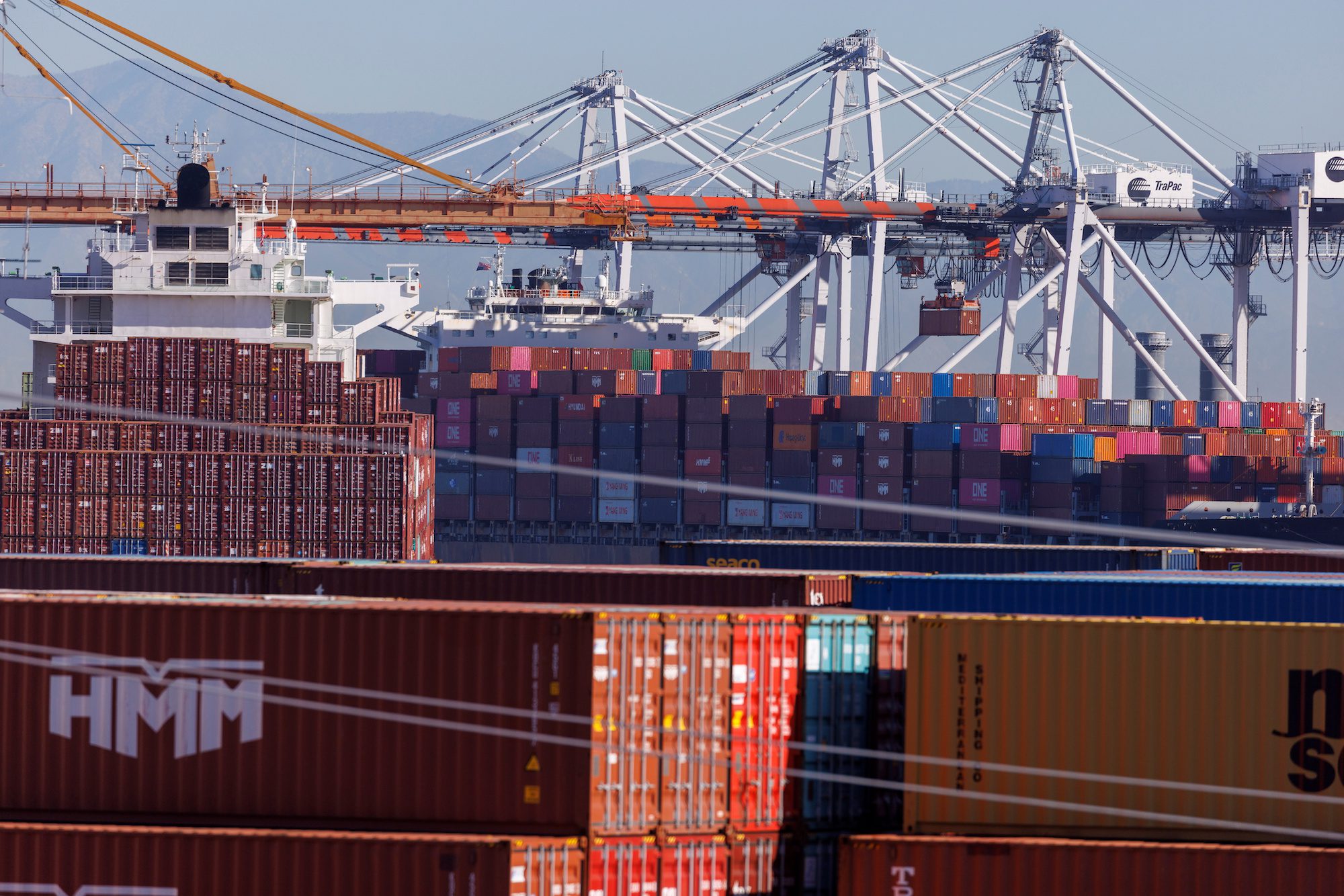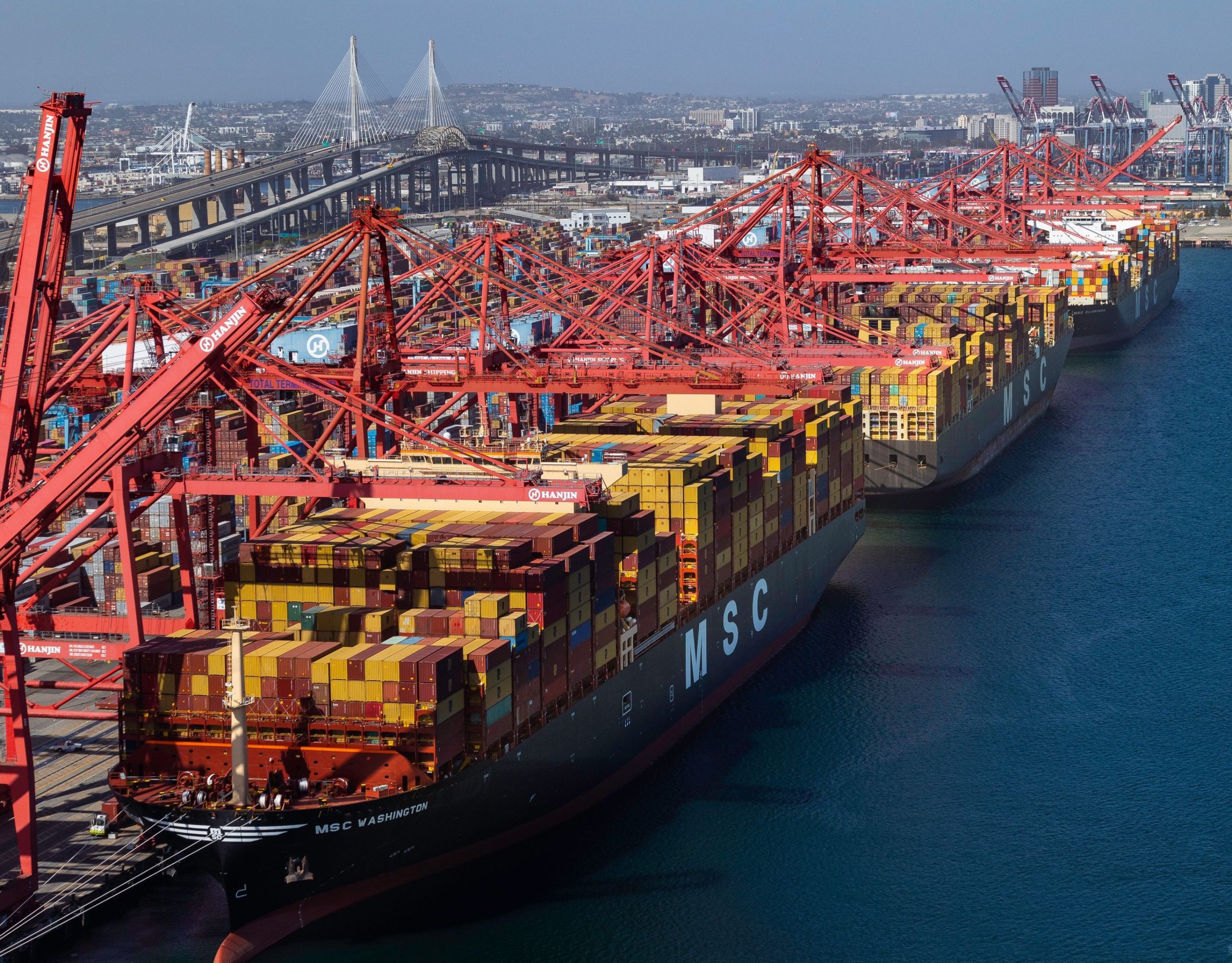By Lisa Baertlein
LOS ANGELES, June 13 (Reuters) – Imports to the busiest U.S. seaport at Los Angeles dropped 9% year-on-year in May and could remain muted through the remainder of 2025, after companies responded to President Donald Trump’s 145% tariffs on China by canceling or putting holds on shipments, according to port officials.
China is the top U.S. supplier of seaborne goods, and Los Angeles is the No. 1 port for those imports. Domestic businesses ranging from retailer Walmart to automaker Ford rely on the toys, furniture and auto parts that land on its docks.
The Port of Los Angeles handled the equivalent of 355,950 20-foot shipping containers of imports in May, when the 145% tariffs began to show up in data.
“May marked our lowest monthly volume in over two years,” Gene Seroka, executive director of the Port of Los Angeles, said on Friday.
“Many importers just simply slammed on the brakes.”
The ports of Los Angeles and Long Beach handle 31% of U.S. ocean trade and are a barometer for U.S. economic activity.
Long Beach has not reported May results. Its CEO previously forecast a more than 10% drop in May imports.
The world’s two biggest economies last month agreed to a 90-day pause on tit-for-tat tariffs, and the U.S. lowered the duty on many Chinese goods to 30% from 145%. The U.S. and China this week agreed to maintain that lower rate, potentially defusing a high-stakes trade dispute.
Ocean shipping company Maersk in a customer advisory on Thursday said volumes from China to the U.S. are rising following the May 12 tariff adjustment to 30%.
Port executives and shipping consultants also expect imports from China to rebound, albeit at a more moderate level as 30% duties represent a significant cost increase for importers.
Seroka said cargo for June appears to have returned to more normal levels with a dozen ships at the port on Friday.
“It’s one of the very few double-digit ship days we’ve had in weeks,” said Seroka.
Nevertheless, his outlook for the remainder of the year is muted because consumer demand is volatile and importers still face a 30% cost increase on goods from China.
“I don’t see the surge that some observers have called for.”
Industry forecasts call for 2025 imports to drop from last year due to continued uncertainty over U.S. tariffs, which also are subject to court battles.
U.S. consumer sentiment improved for the first time in six months in June as trade tensions between the U.S. and China eased. But households remained worried about the economy as tariffs threaten to send prices even higher.
Inventories are growing faster than sales at the most sensitive consumer discretionary companies such as fitness apparel seller Lululemon, Jefferies analysts said in a client note on Friday. Retailers are importing selectively to avoid having to discount excess stock.
The full price hit from tariffs looms as U.S. companies work through stockpiles built before the duties went into effect, said Ernie Tedeschi, director of economics at Yale’s Budget Lab.
In January 2018, Trump’s first administration put tariffs on washing machines. The effect did not show up in consumer price data until three months later, Tedeschi said.
“It takes time for these tariffs to go through.”
(Reporting by Lisa Baertlein in Los Angeles; Editing by Leslie Adler and Rod Nickel)
(c) Copyright Thomson Reuters 2025.

 Join The Club
Join The Club












